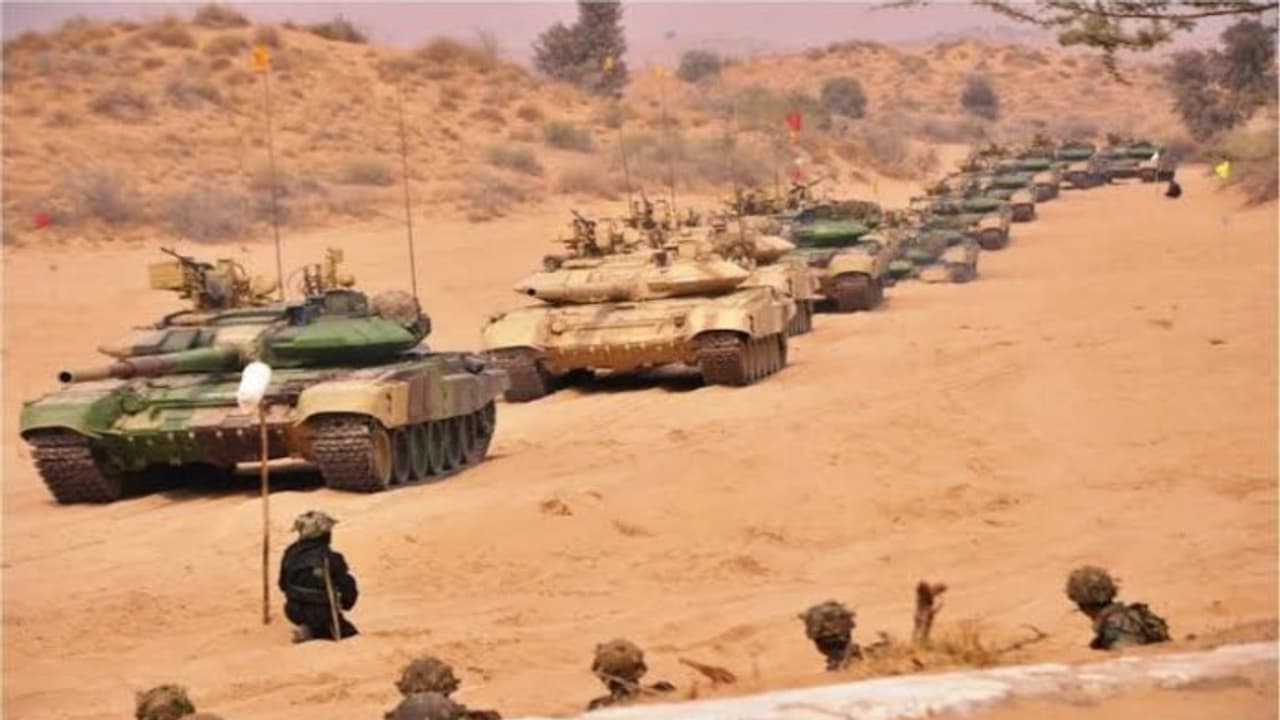Operation Brasstacks, India's largest military exercise in 1986-87, involved over 5,00,000 troops and raised tensions with Pakistan. The exercise's scale and proximity to border led to a standoff, highlighting the region's fragile security dynamics.
In the winter of 1986-87, India conducted Operation Brasstacks, the largest military exercise in its history, involving about 5,00,000 to 8,00,000 troops.

Held in the Thar Desert of Rajasthan, the exercise was intended to test India's operational readiness and tactical capabilities. However, its proximity to the Pakistan border and the scale of the operation led to heightened tensions between the two nations.
The exercise and its objectives
Operation Brasstacks was a combined arms exercise designed to assess the Indian Army's ability to mobilize and execute large-scale operations. The exercise involved nine infantry divisions, three mechanized divisions, and three armored brigades, supported by the Indian Air Force and Navy.
The primary objective was to simulate a defensive operation against a hypothetical adversary, testing the force's operational or "press-button" readiness from the platoon to the divisional level.
The exercise was conducted in phases, starting with planning and coordination in August 1986. The main maneuvers took place from November 1986 to January 1987, with the final phase scheduled for February and March 1987. The operation was designed to be conducted in the winter months before the harvest season to avoid disrupting farmers and after the monsoons to prevent tanks from getting bogged down in slush.
Pakistan's reaction
Pakistan viewed Operation Brasstacks with suspicion, interpreting it as a potential prelude to an offensive. The exercise's scale and proximity to the border raised concerns in Islamabad about India's intentions. In response, Pakistan mobilized its forces along the border, leading to a standoff that lasted for several months.
The situation escalated when Pakistani nuclear scientist Abdul Qadir Khan publicly claimed that Pakistan had developed nuclear weapons. This statement further heightened fears of a nuclear confrontation in the region.
International concerns and de-escalation
The international community expressed concern over the escalating tensions between India and Pakistan. Diplomatic efforts, particularly from the United States, played a crucial role in de-escalating the situation. Through backchannel communications, both countries were urged to reduce their military deployments and engage in dialogue to prevent a conflict.
By early 1987, both India and Pakistan had begun to scale down their military postures. The crisis gradually subsided without any direct military engagement.
Legacy and impact
Operation Brasstacks had significant implications for regional security dynamics. It highlighted the delicate balance of military power in South Asia and the potential for misunderstandings to escalate into conflict. The exercise also underscored the importance of transparent communication and confidence-building measures between neighboring countries.
In India, the operation led to a re-evaluation of military strategies and the need for greater coordination among the armed forces. In Pakistan, the exercise prompted a reassessment of defense policies and the emphasis on nuclear deterrence.
While Operation Brasstacks did not result in war, it served as a stark reminder of the fragile peace in South Asia and the necessity for continued dialogue and diplomatic engagement to maintain stability in the region.


